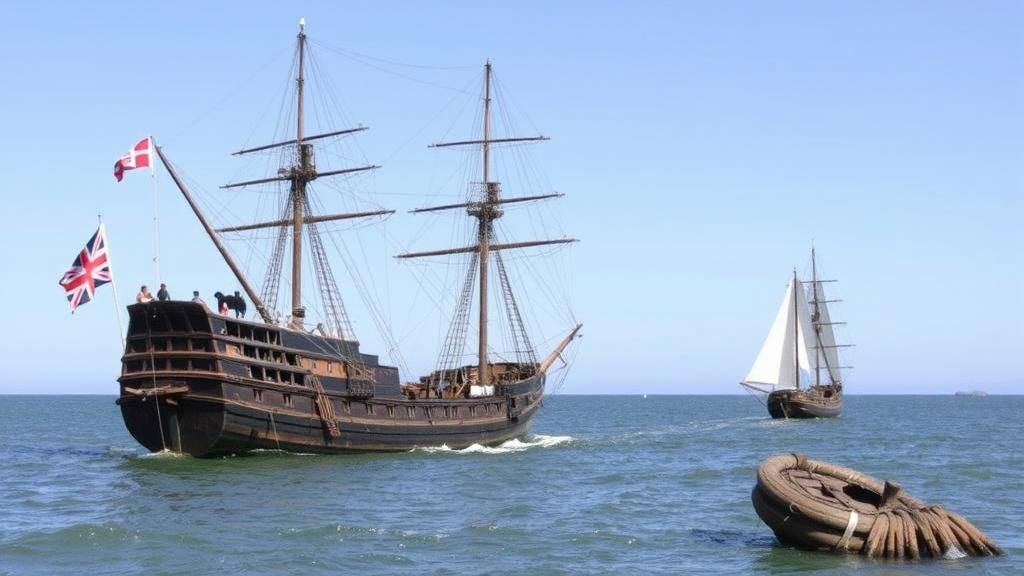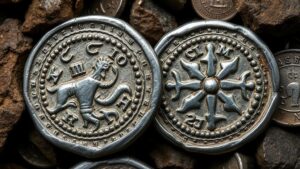The Discovery of the Batavia Shipwreck: Maritime Archaeology Reveals Dutch East India Company Relics in Western Australia
The Discovery of the Batavia Shipwreck: Maritime Archaeology Reveals Dutch East India Company Relics in Western Australia
The Batavia shipwreck, one of Australias most significant underwater archaeological sites, offers a rich narrative of maritime history, colonial enterprise, and the tragic human dramas entwined with the fate of the Dutch East India Company (VOC). Discovered off the coast of Western Australia in the 1970s, the wreck of the Batavia has since become a focal point for maritime archaeology and conservation, shedding light on both the operational expeditions of the VOC and the broader historical context of European exploration in the 17th century.
A Brief History of the Batavia
The Batavia was a Dutch East India Company ship launched in 1628, proficiently crafted for long voyages to the spice-rich regions of Southeast Asia. Designed for trading and armed to navigate the treacherous waters of the Indian Ocean, the ship measured approximately 38 meters in length and was equipped to carry over 300 tons of cargo.
On its maiden voyage, however, tragedy struck. In June 1629, while navigating through the Houtman Abrolhos, an archipelago off the coast of modern-day Western Australia, the ship ran aground on Morning Reef due to navigational errors exacerbated by miscommunication and the treacherous conditions of the waters. This catastrophic event marked the beginning of a harrowing survival story compounded by mutiny, betrayal, and murder.
The Archaeological Discovery
In 1972, marine archaeologist Dr. Ian Godfrey initiated an excavation of the Batavia shipwreck after years of local lore and reports suggested the presence of the vessel near the coastline. discovery not only validated the historical accounts of the wrecking but also opened a treasure trove of knowledge about shipbuilding techniques, trade practices, and passenger experiences during the VOC era.
The actual excavation took place between 1972 and 1979 and involved divers meticulously cataloging artefacts and the ships structural components. Artefacts recovered included:
- Ports and firearms
- Personal items like pottery and glassware
- Tools and everyday objects used by the crew and passengers
These findings have provided critical insights into the daily lives aboard 17th-century trading vessels and the material culture of the time, highlighting not only the goods traded but also the social interactions among crew members and passengers.
The Batavia underscores several key aspects of Dutch maritime practices, particularly those established by the VOC. The company, formed in 1602, was granted a monopoly over Dutch trade in the East Indies, leading to the development of intricate trade routes and a robust network of settlements in Asia.
- Ship Design: The Batavia reflects the advanced shipbuilding techniques of the time, marked by a hull designed for cargo stability and speed.
- Navigation Techniques: The use of celestial navigation and maps, although primitive by today’s standards, were pivotal for the era. Such practices would eventually evolve into complex modern navigation systems.
In terms of the VOC’s operations, the incident provides an illustrative case of the risks associated with long-distance naval expeditions and the dire consequences of leadership failures during voyages. The mutiny and subsequent massacre that occurred among the shipwreck survivors spoke volumes about the tensions and hierarchies aboard such ships.
The Legacy of the Batavia
The Batavia shipwreck has become a significant focal point for both archaeological research and public interest, serving as an example of maritime heritage conservation. The successful recovery of artefacts has fostered discussions about the preservation of underwater cultural heritage. Over the decades, initiatives have been undertaken to protect the wreck site, emphasizing the need for sustainable practices in maritime archaeology.
Plus, the findings from the Batavia are not only stored in museums but are also utilized for educational purposes, illustrating the historical significance of maritime activities and the impact of colonialism. The story of the Batavia resonates with local Aboriginal communities, stretching far beyond the European narrative to include perspectives on the impact of colonial exploration on indigenous peoples.
Conclusion
The excavation of the Batavia shipwreck has provided substantial insights into the operational practices of the Dutch East India Company and the complexities of early maritime exploration. Its discovery illustrates the critical role of maritime archaeology in unearthing the layered histories below the ocean’s surface. Batavia serves as a poignant reminder of the human stories behind historical events, while also emphasizing the importance of preserving such sites for future generations. Learning from the Batavias legacy inspires ongoing discussions about maritime history, archaeological practices, and the interplay between colonialism and indigenous histories.
As we explore the continues relevance of such discoveries, it is essential to engage with both academic circles and local communities, ensuring diverse narratives are included in the interpretation of our maritime past.



